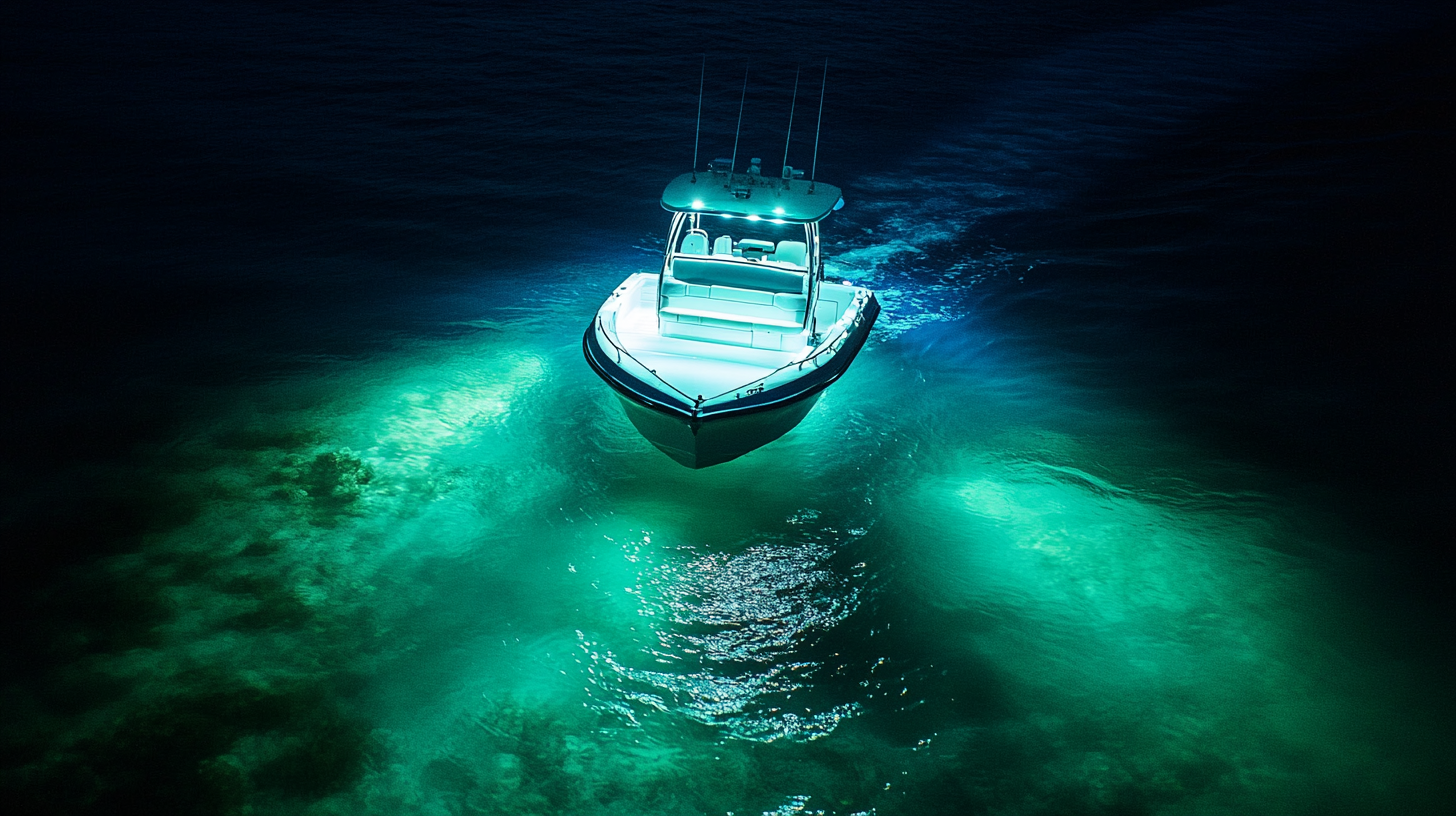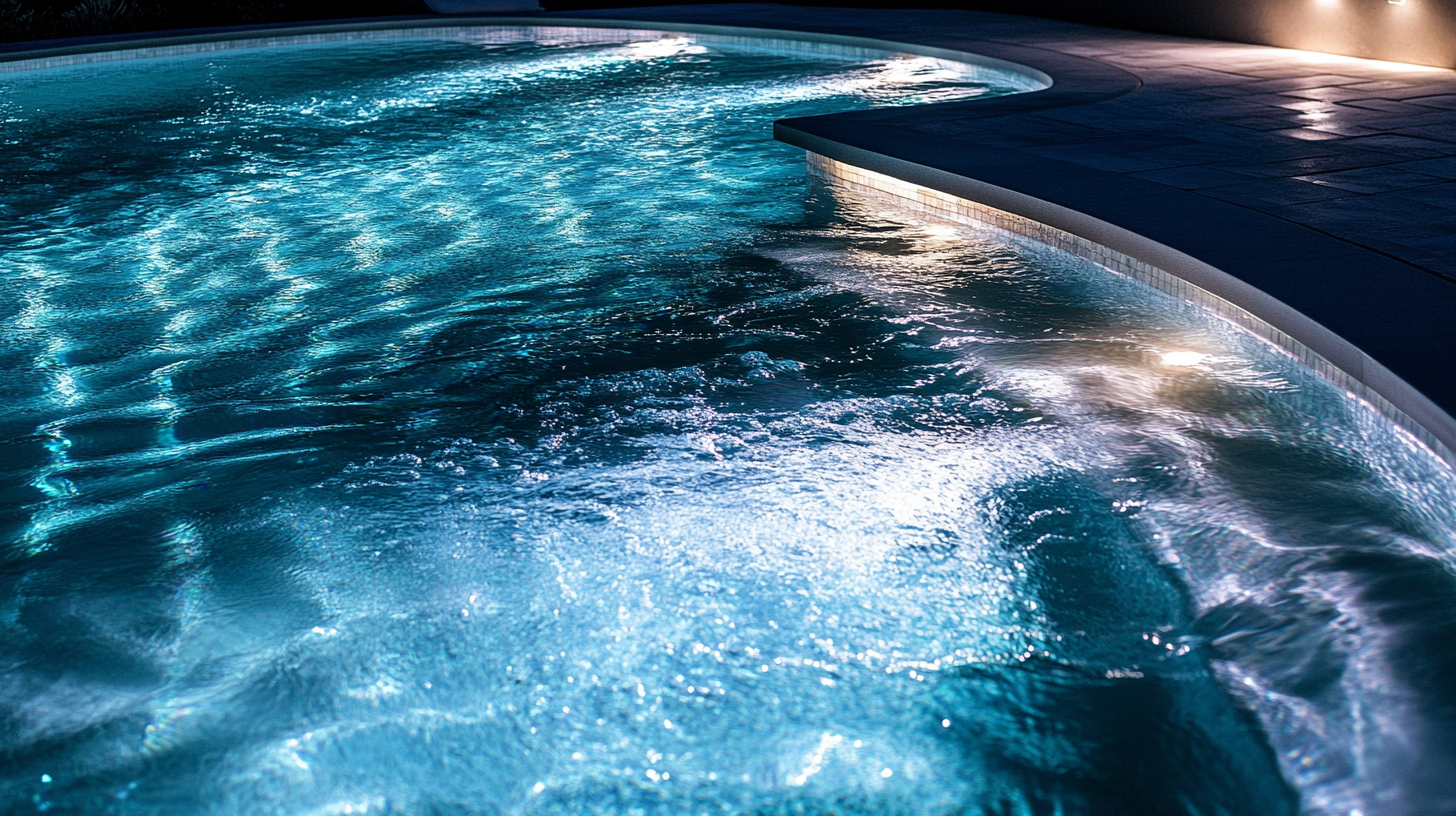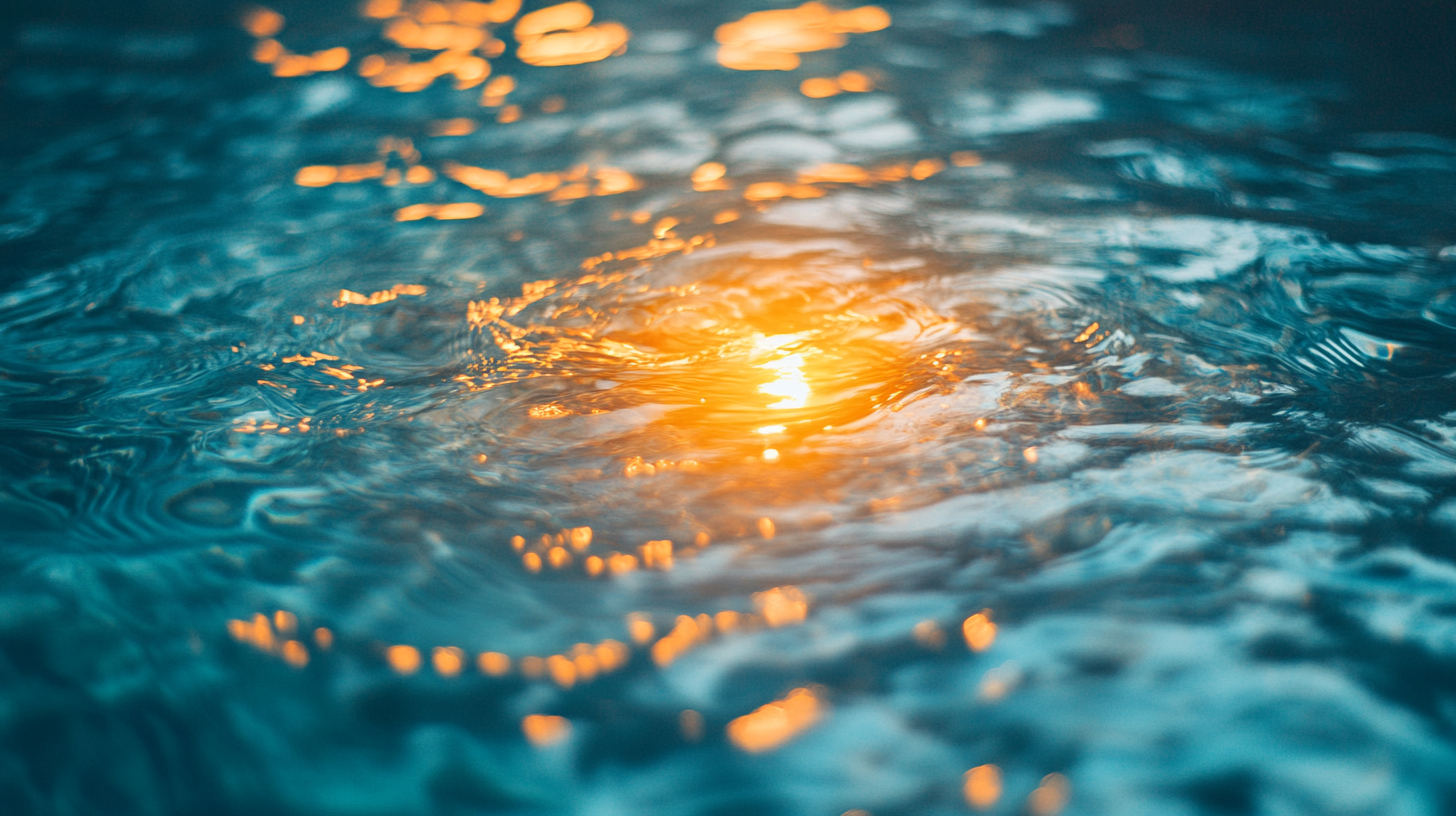Best underwater boat lights for clear vs. murky water conditions
When it comes to underwater boat lights, there are several types to choose from, each offering its own benefits depending on the environment and the specific needs of a boater. The right lighting can make all the difference in terms of safety, effectiveness, and overall experience, especially when comparing clear vs murky water conditions. Selecting the best lights isn’t just about brightness—it’s about understanding your options.
First up are LED underwater lights, which are among the most popular choices. These lights are incredibly energy-efficient and durable, which is always a plus in any boating environment. LEDs come in a variety of colors, and whether you’re navigating in crystal-clear waters or trying to cut through murkier conditions, the versatility is unmatched. Another advantage is their long lifespan, making them a cost-effective option over time. The intensity and quality of an LED light often make it the go-to choice for recreational boating.
For those who need something even more powerful, HID (High-Intensity Discharge) lights are an excellent option. These lights are much brighter than LEDs and are often favored for larger boats or when operating in harsher, murkier water. While they do consume more energy, their potent illumination can penetrate deeper and farther, providing extra visibility and security—especially in challenging boating environments.
If you’re looking for a budget-friendly option, halogen lights might be the way to go. Although they are not as energy efficient as LED or HID lights, halogen lighting has been a staple in boating for decades. However, keep in mind that these lights tend to generate more heat and consume more power, which may lead to frequent bulb replacements.
Lastly, let’s not forget fiber optic underwater lights. While less common and often seen as a premium option, these lights use fiber optic cables to transmit light without generating heat underwater. They offer a unique aesthetic that appeals to many boaters for ambiance and visual appeal, although their brightness may not match other types when it comes to functional underwater lighting.
Your choice among these types will ultimately boil down to your personal performance and aesthetic preferences—whether you’re concerned with long-term costs or just want the brightest lights available for those clear vs murky water conditions you often encounter while out on the water.
Factors to consider in clear water conditions
When you’re boating in clear water, your choice of underwater lighting is influenced by the clarity and depth of the water as well as the aesthetics and visibility desired. Clear water offers less interference with light because particles or algae that can diffuse beams are minimal. This means you don’t need the most intense lighting to get brilliant visibility, but you still want to ensure efficiency and comfort during those late-night boating adventures or evening fishing trips.
First and foremost, you’ll want to consider the color temperature of your lights. In clear water, cooler colors — such as blue and white — tend to be the best. These colors travel further through the water without scattering much, offering clean, crisp illumination. White light is particularly popular because it provides the most natural-looking underwater environment and can make it easier to spot fish or any underwater obstacles. Blue light, on the other hand, not only adds ambiance but also penetrates well through clear water, making it a great option if your boating adventures are more on the leisurely side, like for nighttime cruises or dock parties.
Brightness is another important factor. While you don’t need the most powerful lights, you still want lights that are sufficiently bright to enhance your visibility — especially if you’re diving off the boat or observing marine life in deeper water. LEDs with their energy efficiency are an excellent choice here. They provide plenty of brightness at lower power consumption while also lasting longer than halogen options. For clear water, you may even opt for less powerful LEDs, boosting your overall efficiency without losing out on visibility.
Lastly, note the beam angle of the lights you’re choosing. In clear water, a wide beam spread can help to illuminate a broader section of the surroundings, enhancing your field of vision. Since water clarity allows the light to travel farther, widening the beam makes good sense, whether your goal is to illuminate the area around the boat for snorkeling, fishing, or just creating a vibrant, glowing environment that stands out during night boating.
No matter what type of light you choose, the crystal-clear nature of the water is doing you a favor because it amplifies the effectiveness and overall aesthetics of your underwater lights. Compared to murky water where you might need special considerations, clear water allows you to focus more on setting the right mood and looking good doing it.
Factors to consider in murky water conditions
Murky water presents entirely different challenges for your underwater lighting compared to clear water. The reduced visibility caused by sediment, algae, and other particles floating in the water can significantly limit how far and how well your light can travel. To get the best performance in murky conditions, understanding the key elements affecting your light’s efficiency is crucial.
One of the most important factors to take into account is the light color. In murky water, you generally want to avoid colors like blue, which tends to get absorbed quickly in low-visibility environments. Colors such as green or white are more effective, as green light in particular penetrates through murkier water better due to its wavelength. Green lights also have a tendency to attract fish, which can be an added bonus for night fishing in more turbid waters. White, on the other hand, provides solid visibility and helps improve awareness of nearby obstacles like rocks, piers, and docks.
Brightness is another absolutely critical element. When dealing with murky water, brighter lights are a must because lower-intensity lighting simply won’t cut through the cloudiness. This is where high-powered options like HID (High-Intensity Discharge) lights or high-output LEDs can really shine—literally. These lights pack enough punch to penetrate dense water filled with particles, providing a much-needed boost to visibility during nighttime boating. Keep in mind, however, that this increased brightness will demand more power, so make sure your boat’s electrical system is capable of handling a boost in energy consumption.
The third factor you should strongly consider is the beam angle. A common mistake is to go for lights with a wide beam in murky water, thinking you’ll cover more area. However, a narrow beam angle is actually more effective because it can cut deeper into the water, concentrating the light where you need it most. A focused beam helps improve clarity and minimizes the amount of light that scatters off particles, making it easier to see what’s directly in front of or underneath your boat.
One last piece of advice: if you’re navigating in particularly murky waters frequently, it might be worth installing more underwater lights at various points around your boat, especially at the stern and sides. Not only will this improve visibility, but it also increases safety by reducing blind spots where obstacles or marine life could go unnoticed. Having multiple, high-quality lights set at different angles creates a well-rounded lighting setup that works more efficiently in challenging conditions.
Remember, while your primary focus in clear vs murky water conditions will often change, selecting the best lights that specifically combat low visibility will significantly improve your boating experience—and even your safety. Whether you’re docking, anchoring, or just cruising through murkier environments, tailored underwater lighting can make a world of difference.
Top lighting brands for underwater use
When you’re looking to invest in underwater lighting for your boat, choosing the right brand is critical to ensure durability, brightness, and optimal performance in both clear and murky water conditions. There are several well-established manufacturers in this space whose products consistently rank at the top when it comes to quality, longevity, and adaptability to different aquatic environments.
OceanLED is one of the most revered names in the underwater boat lighting industry. Known for its powerful yet energy-efficient LED systems, OceanLED offers a wide range of lighting solutions that are suitable for both leisure craft and commercial vessels. Their lights are specifically engineered to withstand the harshest marine environments, offering incredible brightness in clear water and the capability to cut through murky water conditions with ease. One standout product is their Sport Series, which is favored by boaters for combining high-output LEDs with low power consumption, making them perfect for versatile, long-term use.
Another big player is Lumitec, renowned for its advancements in marine-grade lighting technology. Lumitec offers both surface-mount and through-hull options, which expand the installation possibilities for different boat designs. Their Seablaze series gets rave reviews for its ability to function reliably in challenging, murky waters. Equipped with cutting-edge electronics, these lights provide powerful illumination with various color options, including white, blue, and green, to meet the needs of different water conditions. Lumitec has designed many of its lights with fully sealed, submersible housings to ensure longevity even in corrosive saltwater environments.
Shadow-Caster also deserves mention as a brand synonymous with high-performance underwater lighting. Known for their durable, marine-grade construction and brilliant light output, Shadow-Caster’s products are particularly effective for boating in both clear and turbid waters. Their SCM-10 series, for example, offers a unique combination of wide-beamed, high-lumen illumination that not only covers large areas in clear water but also excels at penetrating the less transparent, murkier environments, thanks to its optimized wavelength selection. Boaters seeking flexibility in light color can benefit from their multi-color options, which are all controllable through a wireless system, making customization effortless.
For those looking to experiment with innovative lighting technology, Hella Marine is another solid option. Specializing in corrosion-resistant, low-heat LED systems, Hella Marine lights are well-known for their exceptional energy efficiency. Their products are engineered to function in extreme environments while producing strong lumens, often required for murky water. Their rugged, lightweight Sea Hawk-XLR series lights offer 120° wide-angle beams, making them particularly ideal for illuminating larger snorkeling or swimming areas when visibility is an issue due to cloudy water.
Another brand that frequently features in “best lights” lists is BluefinLED. Their lights are popular for those seeking to illuminate large yachts and commercial fishing boats. With incredibly intense brightness levels and multiple beam angles available, BluefinLED lights frequently outperform competitors when it comes to handling both clear vs murky water scenarios. Their Piranha series, in particular, offers efficient power consumption combined with sophisticated color choices, optimizing visibility in deep waters or areas with high sediment concentrations.
Here’s a comparison of some top underwater lighting brands and their key features:
| Brand | Best Features | Ideal for Clear Water | Ideal for Murky Water | Energy Efficiency |
|---|---|---|---|---|
| OceanLED | Durable, high-output LEDs, multiple mounting options | Yes | Yes | High |
| Lumitec | Seablaze series, multi-color options, sealed housing | Yes | Yes | High |
| Shadow-Caster | Wireless control, wide-beam, high-lumen options | Yes | Yes | Moderate |
| Hella Marine | Corrosion-resistant, wide-angle beams, low heat | Yes | Yes | Very High |
| BluefinLED | Intense brightness levels, yacht-friendly designs | Yes | Yes | Moderate |
By selecting one of these top brands, boat owners can ensure that their underwater lighting not only lasts but also performs exceptionally well in varying water conditions. Brands like OceanLED and Lumitec are perfect for those seeking balanced solutions for clear vs murky water applications, while brands like BluefinLED cater to more specialized lighting needs for larger vessels. Whether you’re prioritizing energy efficiency, brightness, or overall robustness, investing in one of these trusted names ensures a better, safer, and more aesthetically pleasing boating experience.
Installation tips for optimal lighting
Proper installation of underwater boat lights is essential to maximize the performance and longevity of your lighting system. Whether you’re outfitting a small recreational boat or a massive yacht, the right positioning and techniques can significantly enhance visibility and aesthetics, and even prolong the life of your lights. The goal is to ensure that your lights are securely mounted, optimally placed for water conditions, and wired to handle the unique challenges posed by the marine environment.
First, you’ll want to consider the location of the lights on your boat. Many boaters opt to install underwater lights along the stern or at the rear of the vessel, where they provide a mesmerizing visual effect while also offering safety when docking at night. For boats that operate in clear vs murky water, this could vary slightly. In clear water, you may get better results with lights placed lower, shining down into the depths, as you can take advantage of the water’s clarity. In murkier water, consider positioning the lights higher up or using multiple lights to bathe the area in more concentrated beams to cut through the particles in the water.
Next, pay close attention to the angle at which your lights are mounted. Ideally, you want the light beam to have a slight downward angle, around 15-20 degrees. This ensures that the light penetrates the water and illuminates a wider area beneath the boat. Avoid mounting lights flat against the boat’s hull because this can cause reflection off the surface of the water, wasting both energy and brightness. In murky water conditions, angling the lights properly is especially important as a downward beam can minimize scattering caused by floating particles, delivering more effective illumination.
Sealing and waterproofing are critical considerations when installing underwater boat lights. Remember, your lights will be exposed 24/7 to water, and corrosion can become a significant issue. Before installation, double-check that the lights have been rated IP68, meaning they are suitable for continuous underwater usage. Always use marine-grade, waterproof sealant when attaching lights to your boat’s hull to prevent leaks. If you’re installing through-hull lights, add an extra layer of sealant to protect the cutouts from water ingress and corrosion in both saltwater and freshwater environments.
When it comes to wiring, it’s essential to use marine-grade wiring and connectors, which are designed to handle the challenging conditions of boating. Wires should be run through conduits if possible, to shield them from water and UV exposure. Using waterproof connectors and heat-shrink tubing for all electrical connections will provide the security needed to ensure your system stays functional for years. Be sure to install a fuse near the power supply to protect against short circuits, and if you’re not confident in your electrical skills, hiring a professional for the wiring process is a smart move.
Additionally, consider pairing your underwater lights with a built-in controller or even a smart lighting system. Many of the best lights for underwater use now come with remote control or even smartphone connectivity. This can make adjusting color, brightness, and strobe effects a breeze, particularly if you’re in different water conditions—such as switching from vibrant blue in clear water to crisp white or green in murky waters.
Testing your installation is critical before you take your boat out. Once the lights are mounted and wired, turn them on in dry conditions to ensure all connections work. Inspect for any flickering, which may indicate a poor electrical connection. After testing, take the boat out into the water to observe how the lights perform. If your lights don’t seem bright enough, or if visibility is poor in murkier conditions, this could mean that the lights need to be re-angled, or you’ve chosen the wrong intensity or color for the water conditions.
Finally, don’t forget about maintenance. The marine environment is harsh, and even the best underwater lighting systems will require periodic cleaning and inspection. Algae, barnacles, and other debris can accumulate on the lights, diminishing their brightness and effectiveness. Regularly clean the lenses with a soft cloth and a marine-safe cleaning solution to ensure top visibility in all conditions, especially when battling murky waters. If your lights are installed in saltwater, consider a more routine cleaning schedule, as salt can speed up corrosion.
Correctly installed underwater boat lights will enhance both the functionality and the visual appeal of your boat. It not only makes your boat look stunning at night but can significantly improve safety and visibility while out in clear vs murky water environments. So, take the time to install your underwater lights properly for a worry-free and enjoyable boating experience.


